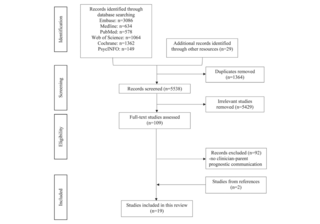Whom Should We Regard as Responsible for Health Record Inaccuracies That Hinder Population-Based Fact Finding?
Electronic health records (EHRs) have revolutionized the scale, speed, and granularity at which health data can be collated and summarized for epidemiologic purposes. However, population-level analyses of patient-level data are only as reliable as the accuracy or completeness of patient reporting, clinician data entry, and how systems are programmed…..
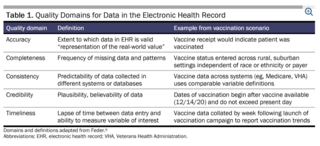
Pain Outcomes Among Medical Centers With High vs Low Specialist Palliative Care Reach Among People With Heart Failure
Pain affects more than 60% of people with heart failure (HF), with increasing frequency and severity towards the end of life (EOL). We examined if family-rated pain near EOL was associated with rates of specialist palliative care (SPC) among patients with HF.
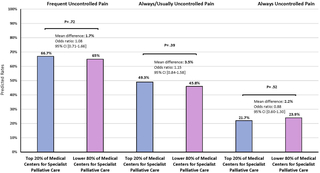
Association Between Restricting Symptoms and Disability After Critical Illness Among Older Adults
Older adults who survive critical illness are at risk for increased disability, limiting their independence and quality of life. We sought to evaluate whether the occurrence of symptoms that restrict activity, that is, restricting symptoms, is associated with increased disability following an ICU hospitalization….
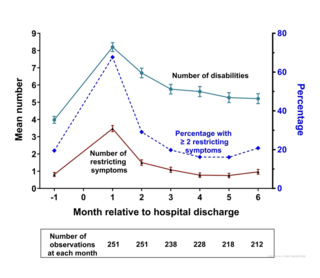
Use of Hospice and End-of-Life Care Quality Among Medical Centers with High Versus Lower Specialist Palliative Care Reach Among People with Heart Failure: An Observational Study
Rates of specialist palliative care (SPC) vary among Veterans Affairs Medical Centers (VAMCs) for people with advanced heart failure (aHF). We evaluated the associations between facility rates of SPC reach and the quality of end of life (EOL) care received among this population…..

Integration of Palliative Care into Heart Failure Care: Consensus-Based Recommendations from the Heart Failure Society of America
Heart failure (HF) is characterized by significant symptoms, compromised quality of life, frequent hospital admissions, and high mortality rates; palliative care (PC) is, therefore, highly relevant for patients with HF and their clinicians. Multiple guidelines and consensus statements recommend the provision of PC alongside HF management. However, few resources exist to guide the integration of PC into HF care, for both primary PC (provided by HF clinicians in the course of HF care) and specialty PC (provided by PC specialists)…..
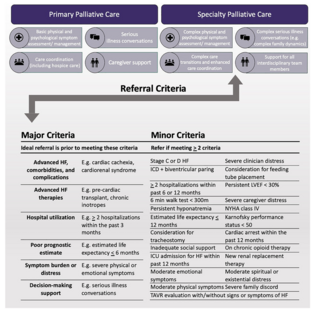
Health-Related Quality of Life in Women With Metastatic Breast Cancer: An Integrative Review
To examine current evidence on health-related quality of life and its associated factors in women with metastatic breast cancer over the past 10 years. Following the integrative review guideline, we screened full-text papers based on the inclusion and exclusion criteria. The quality of the studies was assessed using the Joanna Briggs Institute’s appraisal checklist, and the data were extracted and synthesised…
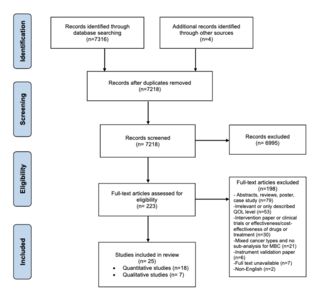
Parent-Clinician Communication and Prolonged Grief in Parents Whose Child Died From Cancer
Parent-clinician communication is essential for high-quality end-of-life (EOL) care in children with cancer. However, it is unknown how parent-clinician communication affects parents’ experience in the first two years after their child’s death. To examine the association between communication and prolonged grief among parents whose child died from cancer and to explore the mediation effect of preparation for EOL care. We analyzed data from a cross-sectional survey of parents of children who died from cancer in the prior 6-24 months. We used multiple linear regression….
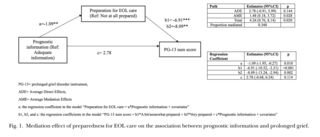
Veterans’ use of inpatient and outpatient palliative care: The national landscape
Palliative care improves the quality of life for people with life-limiting conditions, which are common among older adults. Despite the Veterans Health Administration (VA) outpatient palliative care expansion, most research has focused on inpatient palliative care. This study aimed to compare veteran characteristics and hospice use for palliative care users across care settings (inpatient vs. outpatient) and dose (number of palliative care encounters). his national cohort included veterans with any VA palliative care encounters from 2014 through 2017….
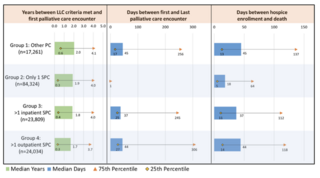
Opportunities to Improve End-of-Life Care Quality among Patients with Short Terminal Admissions
Little is known about Veterans who die during a short terminal admission, which renders them ineligible for the Department of Veterans Affairs (VA) Bereaved Family Survey. We sought to describe this population and identify opportunities to improve end-of-life (EOL) care quality. Retrospective, cohort analysis of Veteran decedents who died in a VA inpatient setting between October 2018-September 2019. Veterans were dichotomized by short (<24 hours) and long (≥24 hours) terminal admissions….
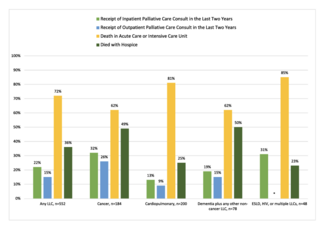
Clinician Insights into Effective Components, Delivery Characteristics and Implementation Strategies of Ambulatory Palliative Care for People with Heart Failure: A Qualitative Analysis
To elicit perspectives from specialist palliative care (SPC) and cardiology clinicians concerning the necessary components, delivery characteristics and implementation strategies of successful ambulatory SPC for people with heart failure (HF). Palliative care is a recommended component of guideline-directed care for people with HF. However, optimal strategies to implement SPC within ambulatory settings are unknown. We conducted a qualitative descriptive study composed of semistructured interviews with SPC and cardiology clinicians at Veterans Affairs Medical Centers (VAMCs)….
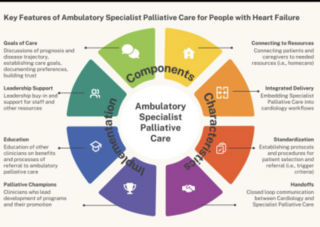
Easing Suffering for ICU Patients and Their Families: Evidence and Opportunities for Primary and Specialty Palliative Care in the ICU
Intensive care unit (ICU) admissions are often accompanied by many physical and existential pressure points that can be extraordinarily wearing on patients and their families and surrogate decision makers (SDMs). Multidisciplinary palliative support, including physicians, advanced practice nurses, nutritionists, chaplains and other team members, may alleviate many of these sources of potential suffering. However, the palliative needs of ICU patients undoubtedly exceed the bandwidth of current consultative specialty palliative medicine teams. Informed by standard-of-care palliative medicine…
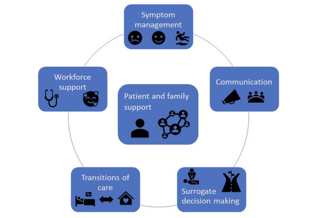
Palliative Pharmacotherapy for Cardiovascular Disease: A Scientific Statement From the American Heart Association
Cardiovascular disease exacts a heavy toll on health and quality of life and is the leading cause of death among people ≥65 years of age. Although medical, surgical, and device therapies can certainly prolong a life span, disease progression from chronic to advanced to end stage is temporally unpredictable, uncertain, and marked by worsening symptoms that result in recurrent hospitalizations and excessive health care use. Compared with other serious illnesses, medication management that incorporates a palliative approach is underused among individuals with cardiovascular disease….
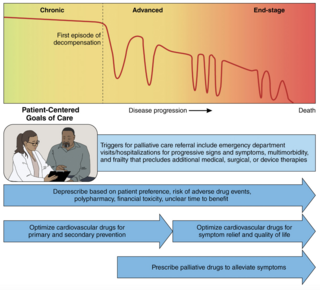
Interventions to promote readiness for advance care planning: A systematic review and meta-analysis
Advance care planning is recommended as part of standard medical services. Readiness, denoting stages of behavior change, exerts a substantial influence on its uptake. However, the characteristics and impacts of advance care planning interventions on readiness are not well-established. We systematically reviewed and conducted a meta-analysis of randomized controlled trials assessing the effects of advance care planning interventions on readiness. Studies were appraised using Joanna Briggs Institute Critical Appraisal tools….
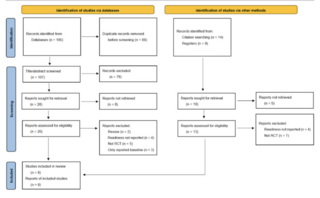
Variation in Specialist Palliative Care Reach and Associated Factors Among People With Advanced Heart Failure in the Department of Veterans Affairs
Clinical practice guidelines recommend palliative care for people with advanced heart failure (aHF), yet it remains underutilized. We examined medical center variation in specialist palliative care (SPC) and identified factors associated with variation among people with aHF. We conducted a retrospective cohort study of 21,654 people with aHF who received healthcare in 83 Veterans Affairs Medical Centers (VAMCs) from 2018-2020. We defined aHF with ICD-9/10 codes and hospitalizations….
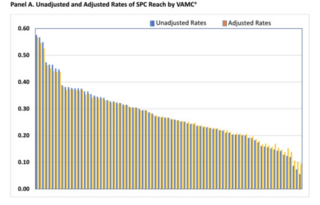
Prognostic Communication Between Parents and Clinicians in Pediatric Oncology: An Integrative Review
Prognostic communication between clinicians and parents in pediatric oncology is complex. However, no review has exclusively examined research on prognostic communication in pediatric oncology. In this review, we synthesize the evidence on prognostic communication in pediatric oncology and provide recommendations for future research. We conducted an integrative review searching six databases for studies on prognostic communication in pediatric oncology as of August 2022. We applied descriptive and narrative approaches to data analysis….
